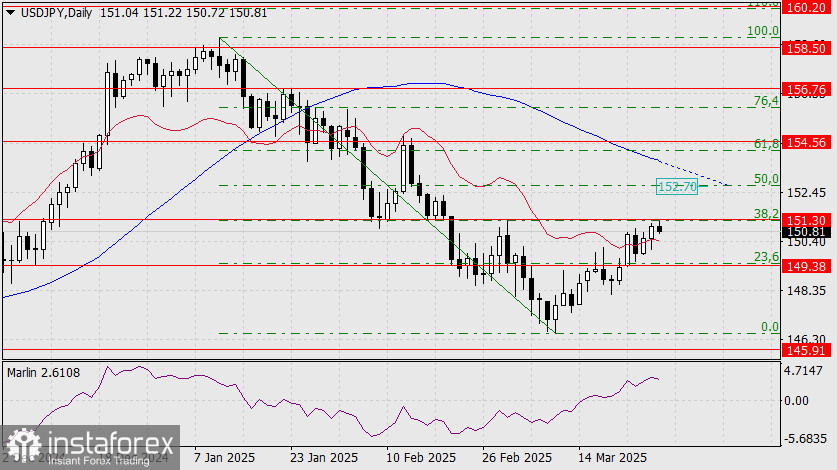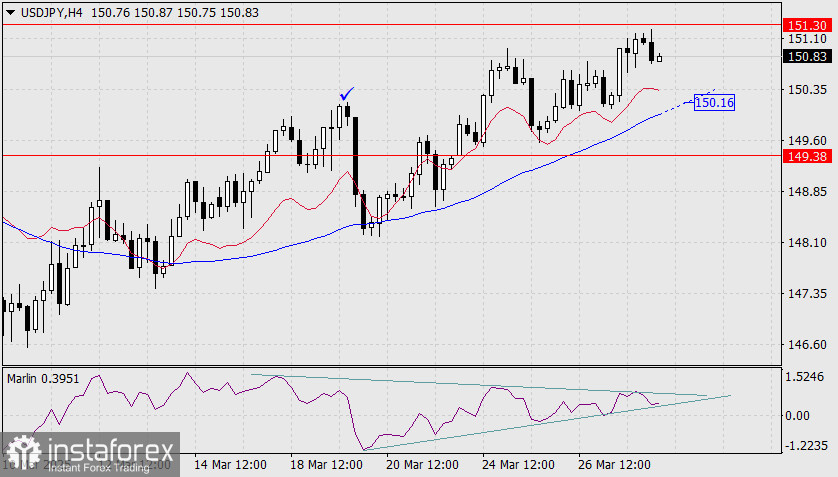Yesterday, Donald Trump signed an executive order imposing a 25% tariff on all automobiles and auto parts imported into the U.S. The tariff on vehicles will take effect on April 3, and the one on parts will begin on May 3. In response to this news, the yen weakened by 0.18%, and during the Asian session today, the Japanese stock index Nikkei 225 fell by 2.14%. Following the Nikkei 225, we expect the USD/JPY pair to decline as an instrument that partially retains its status as a "safe haven" and due to capital returning to Japan amid the steady, albeit slow, retreat of investors from U.S. Treasury bonds.

On the daily chart, the price has nearly reached the 38.2% Fibonacci retracement level, coinciding with the target of 151.30. The Marlin oscillator is ready to reverse, and the price may return to support at 149.38. A consolidation below this level opens the path toward 145.91. A consolidation above 151.30 would only shift the current bearish scenario to the 50.0% Fibonacci level (152.70), where the Kijun line is approaching. Only a move above the Kijun line would create an alternative scenario with growth potential toward 154.56 as the initial target.

On the H4 chart, the Marlin oscillator's signal line has created a broad, extended wedge, indicating a potential downward breakout. A drop below the Kijun line and the 150.16 level (the high from March 19) would confirm the breakout and aim for 149.38.





















